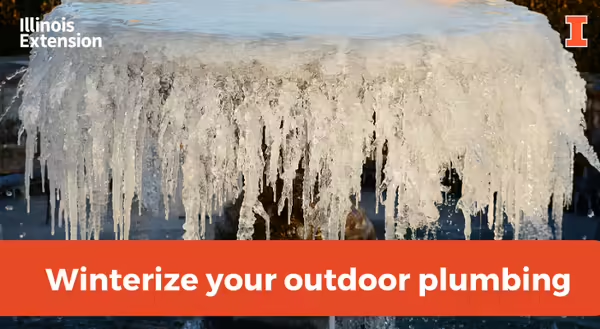
Leftovers. Is this why we only eat turkey once a year? Because after all the leftovers we are sick of giant poultry? Nah! I think turkey is simply more of a seasonal thing. We grow up seeing a turkey as the Thanksgiving centerpiece. To eat a whole turkey any other time just feels wrong. It’s like listening to Christmas music after Christmas. There’s not much demand for Deck the Halls outside of the holiday season. However, I will concede, everyone has that deranged person in the office or home that listens to Christmas music in July.
When we look to the yard and garden after another season, some other leftovers need our attention. My final garden tasks before winter settles in is to winterize all irrigation lines, hoses, and spigots.
The first task is one I am, unfortunately, all too familiar with. Emptying irrigation lines of water. If there is one hard lesson we all learn eventually, it is that water expands as it freezes. It just so happens this expansion is contrary to the rigid nature of our hoses and piping. One year I thought my rigid plastic fittings would be safe from the freezing water left in the drip irrigation lines. I was wrong. Come next spring when I kicked on the irrigation system, fountains of water erupted all over the garden. It was a sight to behold! Since then, even after draining and blowing out the water from the irrigation lines using an air compressor, I still remove all the rigid plastic fittings from my drip irrigation system.
Another necessity is to remove and drain all hoses from the spigots around your home. Store the empty garden hoses in a sheltered location. If you leave the hose attached to the spigot, water may remain in the line and as ice forms, it can progress back into the spigot and perhaps into the house.
If you have a very old water spigot, you could reduce the risk of having a ruptured frozen pipe by swapping it with a new frost-proof spigot. These spigots reduce the risk of freezing water creeping back into the house where a burst water line can do a lot of damage in a short amount of time. Even though these are called frost-proof, don’t think your spigot won’t freeze. It all depends on how cold it gets and how well insulated your home is, including the wall cavities where the spigot’s water supply often is installed. It can create peace of mind to install water shutoffs with bleeder valves to the individual spigots. The bleeder valve is for when you close the shutoff, you then open the bleeder valve to empty the waterline.
Another added side benefit of a new spigot is they usually come standard with an anti-siphon feature that prevents water from siphoning back up from the hose into the home’s water supply.
Hopefully, these last few tidbits of leftover garden chores help you to avoid frozen pipes and busted fittings. Now, it is time to figure out what I must do with the last of these leftover Thanksgiving dishes. Let’s see, throw some mashed potatoes, stuffing, cranberry sauce, turkey, and gravy in a bowl and mix it up. Delicious!
Good Growing tip of the week: Just because a pump is submersible does not mean it should stay in the water over the winter. Most small pumps need to be removed from the water and drained. Larger submersible pumps may need to be stored in water in a location that will not freeze. Always refer to the manufacturer’s directions!
Want to get notified when new Good Growing posts are available? SIGN UP HERE!